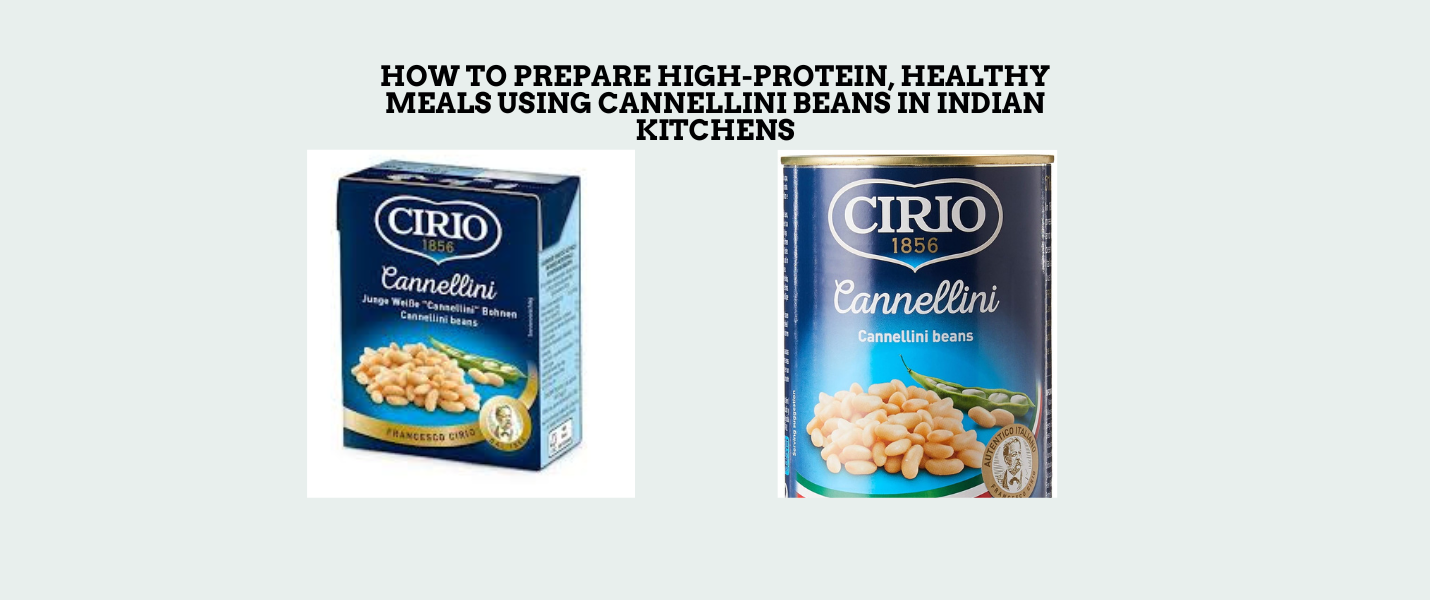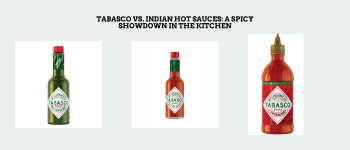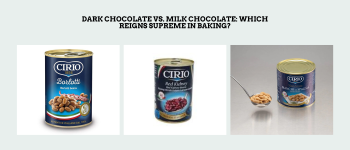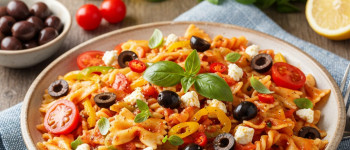

How to Prepare High-Protein, Healthy Meals Using Cannellini Beans in Indian Kitchens
Table of Contents
- Introduction: Why Cannellini Beans Matter in Indian Kitchens
- Understanding Cannellini Beans—Superfood for Indian Families
- What Are Cannellini Beans?
- Nutritional Highlights
- Health Benefits Beyond Protein
- Comparison to Indian Pulses
- Buying and Prepping Cannellini Beans for Indian Cooking
- Choosing Between Dried and Canned Beans
- Preparation Steps
- Batch Cooking & Storage Tips
- How Can You Make Indian-Style High-Protein Meals with Cannellini Beans?
- Cannellini Bean Curry: North & South Indian Styles
- Cannellini Bean Chaats and Salads
- Beans with Breads, Wraps, and Rice
- Curries for Rice Lovers
- Creative Fusion Dishes Using Cannellini Beans
- Samosas & Tikkis
- Dosa, Uttapam, and More
- Pulao, Khichdi, and Power Bowls
- Nutrition Note on Balanced Meals
- Nutrition & Health Focus—Why They’re Truly a Superfood
- Key Nutrition Data (per 100g cooked)
- Health Takeaways and Diet Strategies
- Building a Balanced Plate
- Cooking & Meal Prep Tips—Making Beans a Daily Habit
- Batch Cooking for Busy Lives
- Healthy Cooking Techniques
- Freezer-Friendly Storage
- How to Reduce Gas or Flatulence
- Sample 7-Day Plan—Incorporating Cannellini Beans
- Day-by-Day Menu Ideas
- Practical Tip for Pulse Variety
- Sourcing the Best—Why Chefspoint Is Your Bean Destination
- Product Quality & Selection Guide
- Conclusion: Cannellini Beans—A Healthy Indian Staple
- Frequently Asked Questions (FAQs)
Introduction
Beyond rajma and chana, a new hero has entered Indian kitchens: cannellini beans (also called white kidney beans or white haricot beans). These large, creamy legumes offer not just a deliciously mild flavor and velvety texture but also an impressive boost of plant-based protein, making them ideal for Indian families seeking high-protein, healthy meals. Whether you want to craft a hearty curry, prepare a power-packed salad, or slip extra protein into parathas for your children, cannellini beans fit right in. As more Indians look for versatile superfoods that align with tradition and modern nutrition, it's no surprise that chefs and home cooks alike have embraced the humble "white bean" in their daily fare.
1: Understanding Cannellini Beans—Superfood for Indian Kitchens
What Are Cannellini Beans?
Originating from Italy, cannellini beans belong to the haricot family and are close cousins of the French flageolet and American navy bean. Known for their large, ivory-white appearance, cannellini beans are popular in Tuscan, Provençal, and now, Indian dishes. They're sometimes labeled as "white kidney beans" on store shelves, prized for their ultra-creamy consistency and delicate, nutty flavor.
Nutritional Highlights
- Protein: 7–8g per 100g cooked—comparable to or surpassing Indian staples like chana and moong dal.
- Fiber: 6.4g per 100g cooked—supports digestion, keeps you satiated, and helps lower cholesterol.
- Iron: 2.9mg per 100g cooked—important for blood health, especially in vegetarian diets.
- Folate: Vital for cell repair and prenatal health.
- Magnesium, potassium, and B vitamins: Contribute to heart, muscle, and nerve health.
- Very low in fat: Less than 1g per 100g, most of it unsaturated.
- No cholesterol or gluten.
By including cannellini beans in weekly meals, Indian families can benefit from their substantial protein, micronutrients, and gut-friendly fiber—key pillars for growing children, busy professionals, and elders alike.
Health Benefits: More Than Just Protein
- Weight Management: High fiber and protein keep you fuller for longer, reducing cravings and unnecessary snacking.
- Heart Health: Natural soluble fiber lowers bad cholesterol, while potassium and magnesium help manage blood pressure.
- Blood Sugar Balance: The complex carbs in cannellini beans have a low glycemic index, making them suitable for diabetics and those watching blood sugar.
- Gut Health: Support a healthy microbiome and improve digestion.
Comparison to Indian Pulses
| Bean Type | Protein (per 100g, cooked) | Fiber (g) | Iron (mg) |
|---|---|---|---|
| Cannellini Beans | 7.5 | 6.4 | 2.9 |
| Chickpeas (Chana) | 7.0 | 6.0 | 2.9 |
| Kidney Beans | 8.7 | 6.4 | 2.9 |
| Moong Dal | 7.0 | 7.6 | 2.2 |
Takeaway: Cannellini beans stand shoulder to shoulder with India’s favorite dals and rajma. They’re a seamless upgrade when you crave variety or want extra creaminess in your bean dishes.
2: Buying and Prepping Cannellini Beans for Indian Cooking
Choosing: Dried vs. Canned
- Dried beans: Economical, pure ingredient, and give control over texture. Soaking is necessary, but you get plumper, more flavorful beans ideal for classic Indian curries or dosa fillings.
- Canned beans: Ultra-convenient—rinsed and drained, they’re ready for instant salads, chaats, and stir-fries. Note: Always rinse them to remove excess sodium and brine.
Cost Tip: Buy dried in bulk and cook a big batch over the weekend!
Preparation Steps
For Dried Cannellini Beans:
- Soak overnight: Use 3–4 times as much water as beans. This step reduces flatulence, nearly halves cooking time, and improves nutrient absorption.
- Drain and rinse, then cook:
- Pressure Cooking: 8–10 whistles after soaking yields perfect, creamy beans.
- Boiling: Simmer 40–60min until tender but not mushy.
- Salt: Add a pinch once beans are softening.
- Drain and set aside.
For Canned Cannellini Beans: Simply drain and rinse under running water before use.
Batch Cooking & Storage
- Fridge: Cooled cooked beans last up to 3 days.
- Freezer: Divide into portions and freeze for 2 months. Great for meal-prep or spontaneous healthy cravings.
3: How Can You Make Indian-Style High-Protein Meals with Cannellini Beans?
1. Cannellini Bean Curry: Hearty Comfort, Family Favorite
North Indian Style
- 1 cup cooked cannellini beans
- 1 large onion, 2 tomatoes, 1 inch ginger, 4 garlic cloves (all finely chopped)
- Spices: 1 tsp cumin, 1 tbsp coriander powder, ½ tsp turmeric, ½ tsp chili powder, 1 tsp garam masala
- 2 tbsp oil, salt, coriander leaves
- Heat oil, sauté cumin, onions, ginger, garlic until golden.
- Add tomatoes, all spices, salt. Cook till oil emerges.
- Stir in cannellini beans, ¼ cup water. Simmer 10–12min.
- Finish with garam masala and coriander.
- Serve with rice, roti, or as a loaded toast.
South Indian (Coconut) Variation
- Use coconut oil and finish with ½ cup thin coconut milk.
- Add mustard seeds, curry leaves, and a pinch of hing in the tempering.
- Optional: Freshly grated coconut or sambar powder for extra flavor.
Flavor tips: Beans become the protein star, soaking up all the Indian masala goodness while staying creamy.
2. Cannellini Bean Chaat and Salad
For Chaats:
- Mix boiled beans with diced onion, tomato, coriander, mint leaves, chaat masala, cumin powder, lemon juice, and a dash of green chilies.
- Sprinkle with sev or pomegranate seeds.
For Salads:
- Combine beans with chopped cucumbers, peppers, carrot, olives, lettuce, and a light dressing of lemon, olive oil, black pepper, and a sprinkle of salt.
- Add roasted cumin, chaat masala, or a little yogurt for Indian flavor.
3. Beans with Breads, Wraps, and Rice
- Stuffed Parathas: Mash cannellini beans with onion, green chilli, coriander, cumin. Fill rolled dough, cook as usual.
- Wraps/Sandwiches: Mix lightly spiced beans with veggies and chutney, stuff in rotis, wraps, or multigrain bread.
- On Toast: Spoon masala beans on wholegrain toast for a quick, satisfying breakfast or kids' lunchbox.
4. Curries for Rice-Lovers
Cannellini beans are a wonderful addition to tomato-based or palak (spinach) curries, offering a creamy texture and plenty of nutrition. They absorb classic Indian spices and meld seamlessly with tomato or spinach gravies, creating dishes that are satisfyingly high in protein, rich in iron, and bursting with flavor.
- Protein & Iron Boost: Raises the protein and iron content in vegetarian curries, supporting balanced nutrition for the whole family.
- Creamy Texture: Natural creaminess thickens the curry, reducing the need for excess cream or butter.
- Absorbs Spices: Soak up aromatics and spices, carrying tangy tomato, earthy spinach, garlic, ginger, and garam masala effortlessly.
4: Creative Fusion Dishes with Cannellini Beans
- Samosa & Tikki: Replace or combine potatoes with mashed cannellini beans in samosa or aloo tikki, boosting protein and lowering glycemic load.
- Dosa and Uttapam: Blend a handful of cannellini beans into idli/dosa batter for a nutrition upgrade. Or, make a simple bean masala as a filling for masala dosa.
- Pulao & Khichdi: Add cooked cannellini beans to vegetable pulao or khichdi. Beans hold their shape and provide a protein punch.
- Power Bowls: Layer cooked cannellini beans, millet or brown rice, stir-fried veggies, pickled onions, coriander-mint chutney, and a handful of roasted nuts for a one-bowl power meal.
Nutrition note: Combining beans with grains, nuts, and veggies ensures all essential amino acids and a balanced meal.
5: Nutrition & Health Focus—Why They’re Truly a Superfood
Key Nutrition Data (per 100g cooked)
- Protein: 7.5g
- Fiber: 6.4g
- Iron: 2.9mg
- Folate: ~114mcg (30% RDA)
- Potassium: ~330mg
- Calories: ~130 kcal
- Fat: <1g
Cannellini Beans vs. Common Indian Pulses
| Food | Protein (g) | Fiber (g) | Iron (mg) | Calories |
|---|---|---|---|---|
| Cannellini Beans | 7.5 | 6.4 | 2.9 | 128 |
| Chickpeas (Chana) | 7.0 | 6.0 | 2.9 | 127 |
| Kidney Beans (Rajma) | 8.7 | 6.4 | 2.9 | 122 |
| Moong Dal | 7.0 | 7.6 | 2.2 | 118 |
Health Takeaways
- Robust protein/fiber combo, making them more satiating and excellent for weight management.
- Iron and folate content is perfectly suited for vegetarian and vegan diets.
- Fiber supports gut health, lowers cholesterol, and helps stabilize blood sugar—ideal for heart health and diabetes-prone Indian populations.
- When paired with olive oil, the absorption of fat-soluble vitamins increases.
Building a Balanced Plate
- Combine cannellini beans with whole grains (rice, millet, brown bread), colorful veggies, and healthy fats (olive or mustard oil).
- Aim for: 1/4 plate beans, 1/4 whole grains, 1/2 veggies, with a healthy fat drizzle for an "easy protein meal" every Indian can enjoy.
6: Cooking & Meal Prep Tips—Making Beans a Daily Habit
Batch Cooking for Busy Lives
- Cook a large pot of beans on Sunday, store them in the fridge or freezer, and use throughout the week in salads, soups, curries, or chaats.
Healthy Cooking Techniques
- Pressure cooking: Saves gas/time and ensures thorough cooking.
- Steaming: Softens beans gently.
- Minimal oil: Beans don’t need heavy fat to taste rich; Indian spices provide flavor.
Freezer-Friendly Tips
- Divide cooked beans into small, airtight containers or zip-pouches.
- Store single-meal portions for quick curries, pulao, or salads.
- Thaw overnight in the fridge or defrost in the microwave.
How to Reduce Gas or Flatulence
- Always soak dried beans overnight and discard the soaking water.
- Add a pinch of hing (asafoetida), ajwain (carom seeds), or fresh ginger during cooking for easier digestion.
- Pair with fermented foods like dahi or pickles for gut-friendly meals.
7: Sample 7-Day Plan—Incorporating Cannellini Beans into Indian Meals
- Day 1: Cannellini bean curry with brown rice and cucumber raita
- Day 2: Masala cannellini bean chaat with papdi
- Day 3: Paneer and cannellini bean paratha, mint chutney
- Day 4: Idli-dosa batter with blended beans, sambar, coconut chutney
- Day 5: Pulao with beans, peas, carrots, roasted peanuts
- Day 6: Power bowl with millet, beans, stir-fried vegetables, lemon-tahini dressing
- Day 7: Samosa with potato-bean filling and sweet tamarind chutney
Tip: Mix up your pulses—don’t just rely on one type of bean!
8: Sourcing the Best—Why Chefspoint Is Your Bean Destination
- Chefspoint offers Cirio Cannellini Beans (400g), a top-quality choice trusted by home cooks. Whether you want to try the canned version or buy in bulk for regular use, the beans are carefully selected for size and flavor, consistent in cooking quality and taste, and backed by fast, reliable delivery straight to your kitchen.
Find them in stores or order online for quick delivery and kitchen inspiration.
Conclusion
Cannellini beans are more than a trend—they’re a pathway to healthier, higher-protein, and truly delicious meals tailored perfectly for Indian kitchens. Their mild, nutty flavor suits a whole spectrum of Indian and fusion recipes, from comforting curries to speedy salads and stuffed breads. Investing effort in prepping and cooking them means you gift your family high-value nutrition every day. The next time you plan your grocery list, add a pack of cannellini beans and give your home menu a tasty, powerful protein upgrade. Start today, experiment with the ideas above, and share your favourites with the Chefspoint community. Here’s to health, taste, and the joy of new beginnings!
Frequently Asked Questions (FAQs)
1. Can cannellini beans replace chickpeas or rajma in Indian recipes?
Yes, cannellini beans can replace chickpeas or rajma in curries, chaats, or salads, offering a creamy texture and high protein for diverse Indian meals without losing authenticity.
2. Are cannellini beans safe for people with certain allergies?
Cannellini beans are generally safe unless you have a legume allergy. Always introduce new beans gradually and consult a healthcare provider for known pulse or bean sensitivities.
3. How much protein do they provide per serving?
A serving of cooked cannellini beans (about 100g) delivers around 7–8g protein, making them one of the best sources of white kidney beans protein for both vegetarians and flexitarians.
4. Are canned or dry beans better nutritionally?
Both are nutritious, but dried cannellini beans (cooked fresh) may retain slightly more nutrients. Canned beans are convenient, but rinse well to reduce sodium before use in your favorite bean curry Indian dish.
5. How to reduce flatulence when eating beans?
Soak white haricot beans overnight and discard soaking water before cooking. Cook thoroughly and add a pinch of hing (asafoetida) or ginger to your beans curry recipe to improve digestion and minimize discomfort.
6. Do cannellini beans help with weight management?
Yes, cannellini beans are high in protein and dietary fiber, which promote satiety, reduce cravings, and support healthy weight management by keeping you fuller longer and helping control calorie intake naturally.
7. Are cannellini beans suitable for diabetics?
Absolutely. Cannellini beans have a low glycemic index and their fiber content helps regulate blood sugar levels. They are a smart choice for diabetics and those seeking stable energy throughout the day.
8. Can you freeze cooked cannellini beans for later use?
Cooked cannellini beans freeze well. Divide them into airtight containers or freezer bags and store for up to two months, making it easy to add to quick curries, salads, or stews when needed.
9. What Indian dishes can feature cannellini beans?
Cannellini beans work great in curries, chaats, salads, stuffed parathas, dosas, and even samosas. Their mild flavor absorbs Indian spices beautifully, making them versatile for fusion and traditional recipes alike.
10. Are cannellini beans gluten-free and vegan?
Yes, cannellini beans are naturally gluten-free and vegan, making them suitable for almost all diets, including those with gluten sensitivity or dairy restrictions, and ideal for healthy plant-based Indian meals.
Share views on How to Prepare High-Protein, Healthy Meals Using Cannellini Beans in Indian Kitchens
Please keep your views respectful and not include any anchors, promotional content or obscene words in them. Such comments will be definitely removed and your IP be blocked for future purpose.
Blog Categories
Blog Tags
 10th Sep 2025
10th Sep 2025
 3rd Jun 2024
3rd Jun 2024
 11th Nov 2024
11th Nov 2024
 10th Nov 2025
10th Nov 2025
 4th Oct 2025
4th Oct 2025
 18th Dec 2024
18th Dec 2024
 16th Oct 2024
16th Oct 2024
 28th Nov 2024
28th Nov 2024
 17th Dec 2024
17th Dec 2024
 5th Oct 2025
5th Oct 2025
 13th Oct 2025
13th Oct 2025
 19th Dec 2024
19th Dec 2024
 4th Oct 2025
4th Oct 2025
 28th Dec 2024
28th Dec 2024
 23rd Dec 2024
23rd Dec 2024
